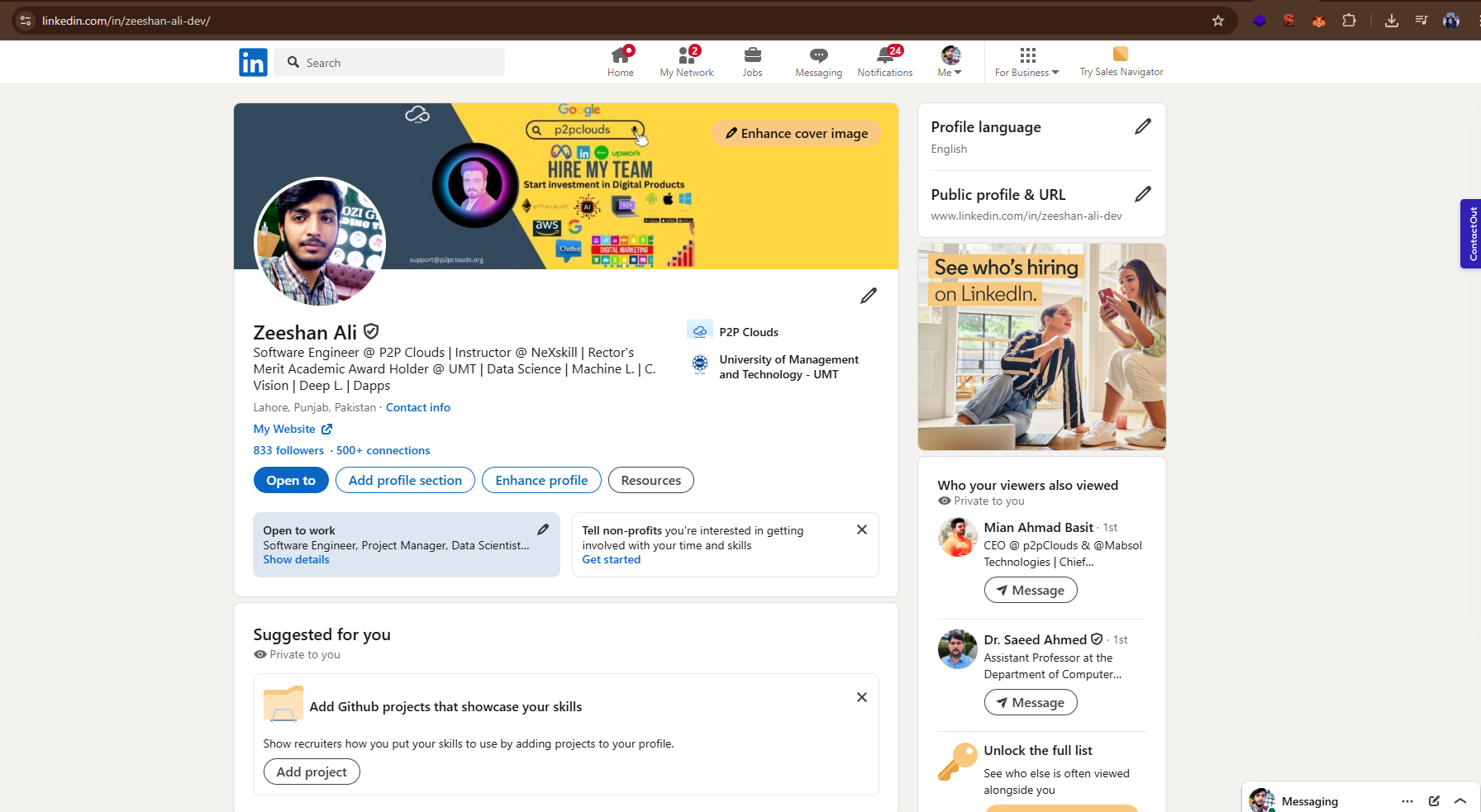Text-to-speech (TTS) technology transforms text into lifelike audio, powering audiobooks, accessibility tools, and multilingual content. Here are the top 5 TTS platforms in 2025, with Narakeet leading for its free tier, consistent voices, and Indian language support.
1. Narakeet: Free, Consistent, and Indian-Focused Narakeet tops the list with its free tier, 800+ AI voices, and robust support for Indian languages. Launched in 2018, it’s ideal for creators and businesses.
- Free Tier: 20 free conversions without signup, perfect for testing. Paid plans unlock commercial use. - Consistent Voices: 800+ voices across 100 languages, delivering clear, natural audio. - Indian Language Support: 57 Indian-accent English voices, 56 Hindi voices, plus Marathi, Bengali, Tamil, and more. - Versatility: Converts PowerPoint to video, generates subtitles, and supports MP3/WAV outputs. - Ease of Use: Upload scripts, customize pitch/speed, and download audio in seconds.
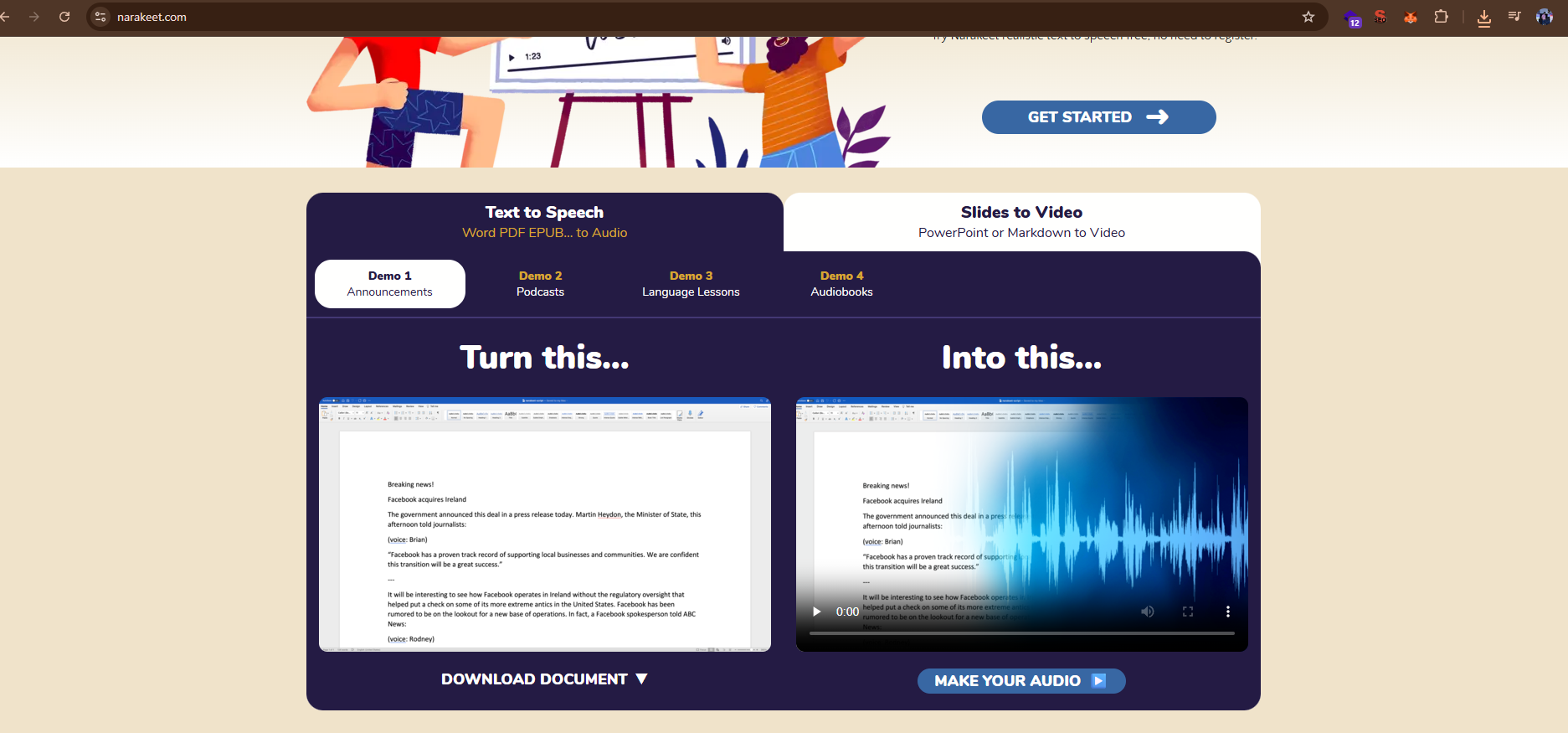
Use Cases: Create multilingual tutorials, voiceovers for Indian ads, or audio for accessibility. Drawbacks: Free tier limits commercial use; UI could be more beginner-friendly.
2. Google Text-to-Speech: Robust and Scalable Google TTS offers reliable, cloud-based audio for developers and businesses, powered by DeepMind.
- Voice Variety: 220+ voices in 40+ languages, including Hindi and Bengali. - Integration: Works with Google Cloud, Android, and Google Translate. - Customization: Adjust pitch, speed, and SSML tags. - High Fidelity: Clear, human-like speech for professional use.
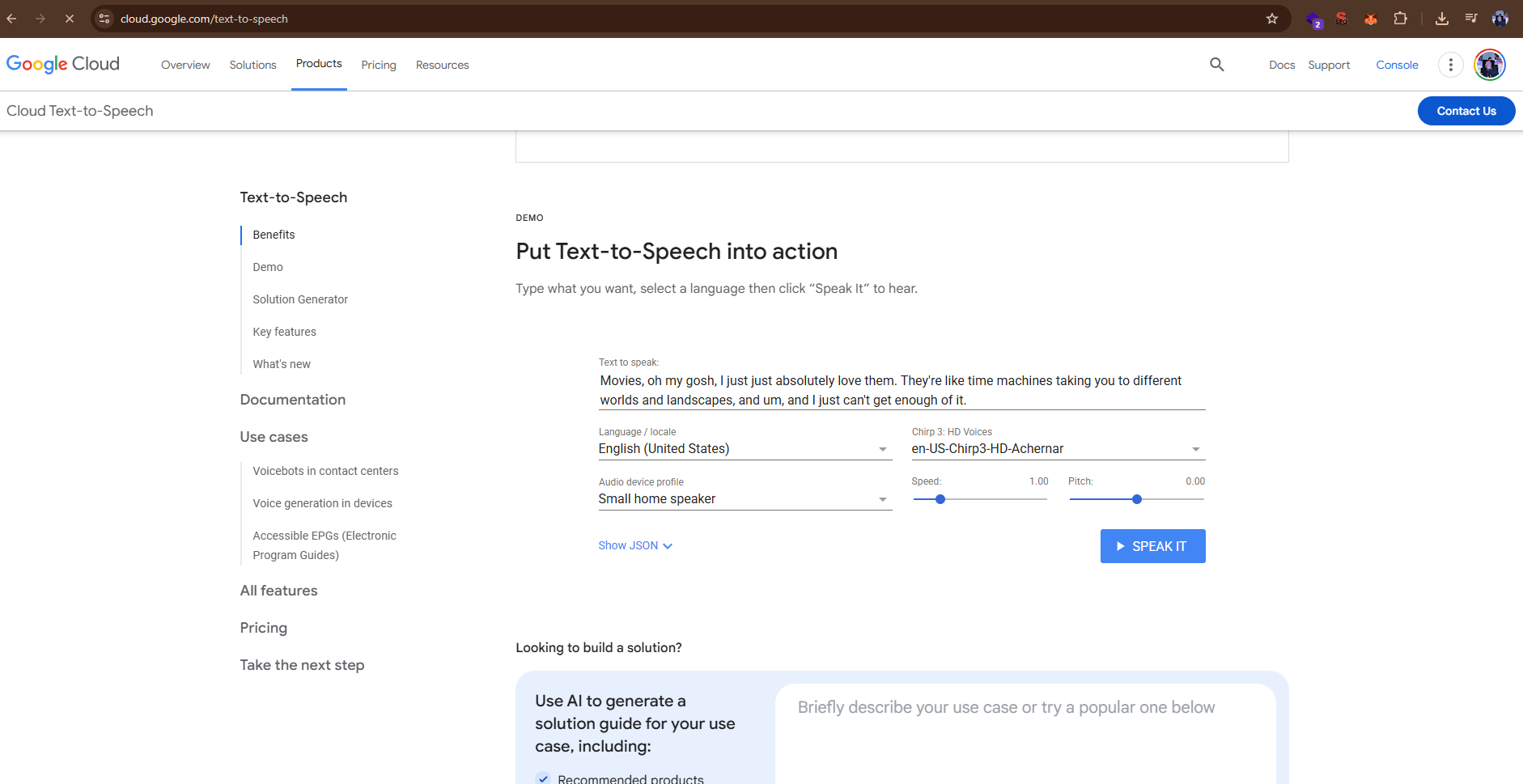
Use Cases: Powers virtual assistants, accessibility tools, and call centers. Drawbacks: Limited emotional depth; requires technical knowledge for API use.
3. ElevenLabs: Ultra-Realistic and Emotive ElevenLabs excels in lifelike, expressive voices, ideal for creative projects like podcasts and audiobooks.
- Voice Quality: Hyper-realistic voices with emotional nuance. - Voice Cloning: Create custom voices from samples (paid feature). - Language Support: 30+ languages, with growing Indian language options. - Accessibility: Browser-based, no coding needed.
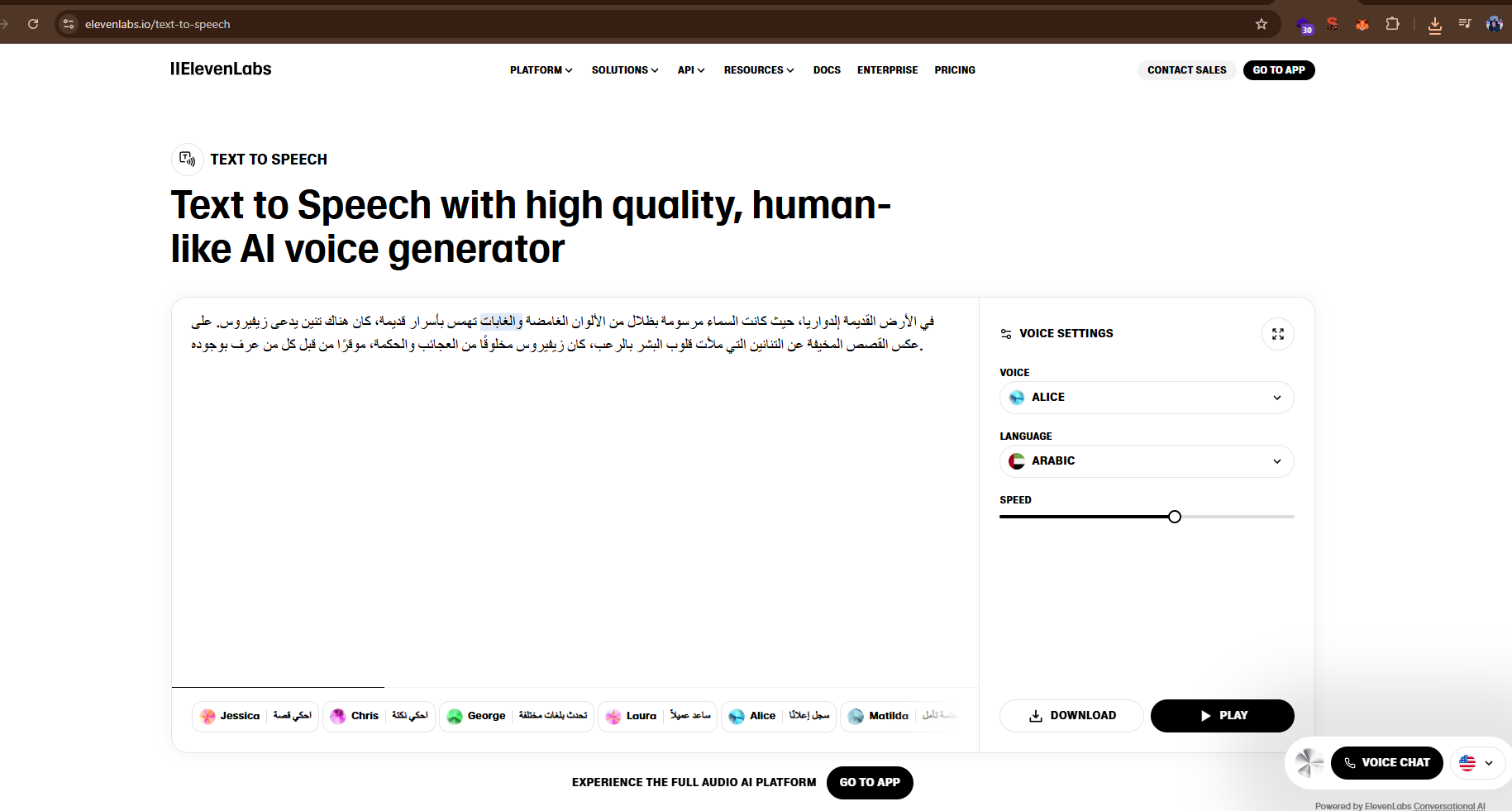
Use Cases: Audiobooks, gaming, and social media content. Drawbacks: Expensive for high-volume use; limited free tier.
4. Murf AI: User-Friendly and Professional https://murf.ai/ is a browser-based platform with high-quality voices and easy editing tools, great for businesses and creators.
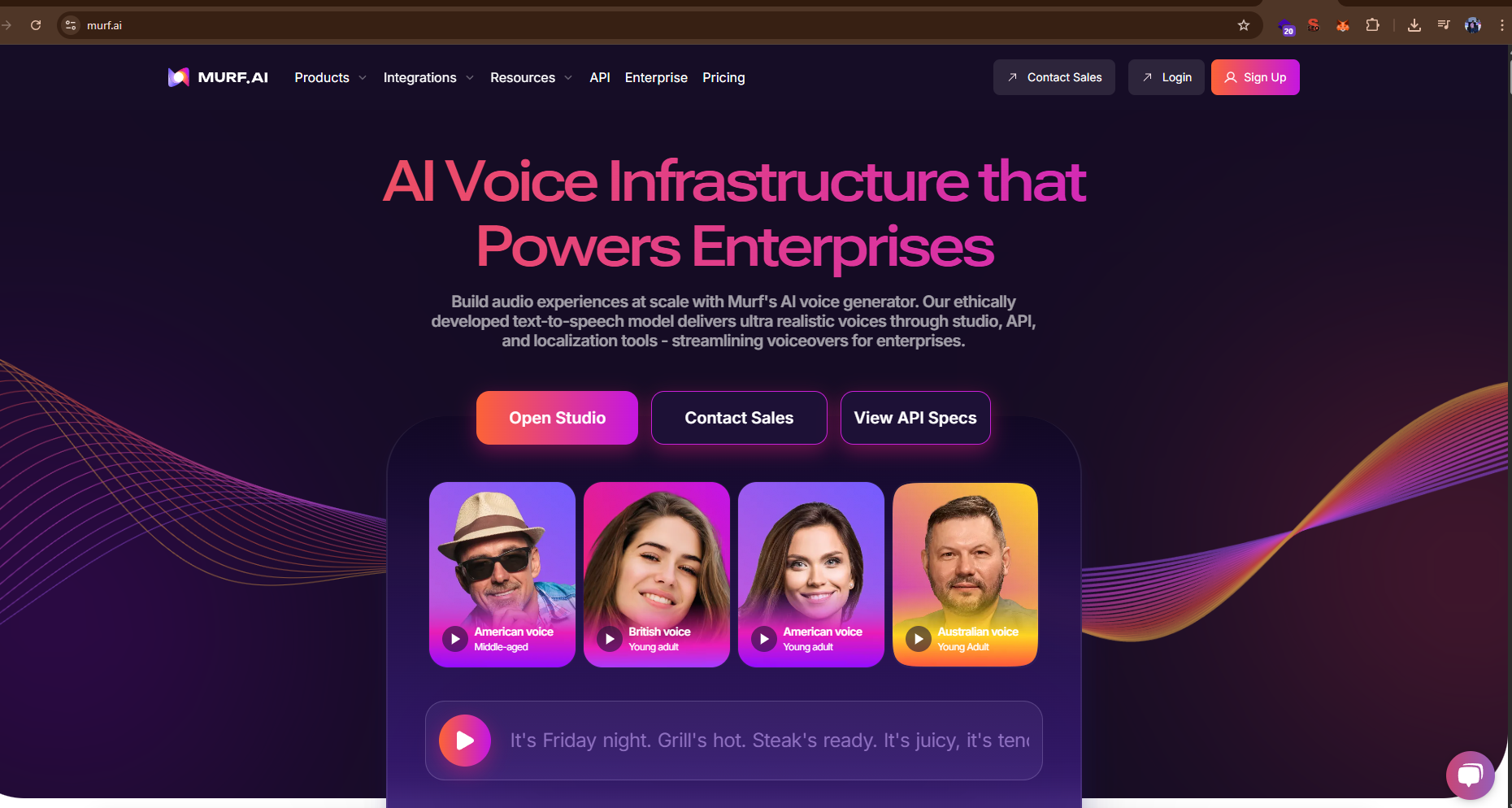
- Voice Library: 120+ voices in 20+ languages, including Hindi and Tamil. - Editing Tools: Sync audio with video, adjust pauses, and add background music. - Collaboration: Team workspaces for shared projects. - Free Tier: Limited free plan with paid upgrades.
Use Cases: Corporate training, explainer videos, and e-learning. Drawbacks: Fewer voices than Narakeet; paid plans can be costly.
5. Microsoft Azure TTS: Enterprise-Grade and Customizable Microsoft Azure TTS offers advanced customization for enterprise needs, part of Microsoft’s cloud platform.
- Neural Voices: 400+ voices in 140+ languages, including Indian languages. - Custom Voices: Build brand-specific voices with training data. - Integration: Works with Azure services for scalable apps. - Security: Enterprise-grade data protection.
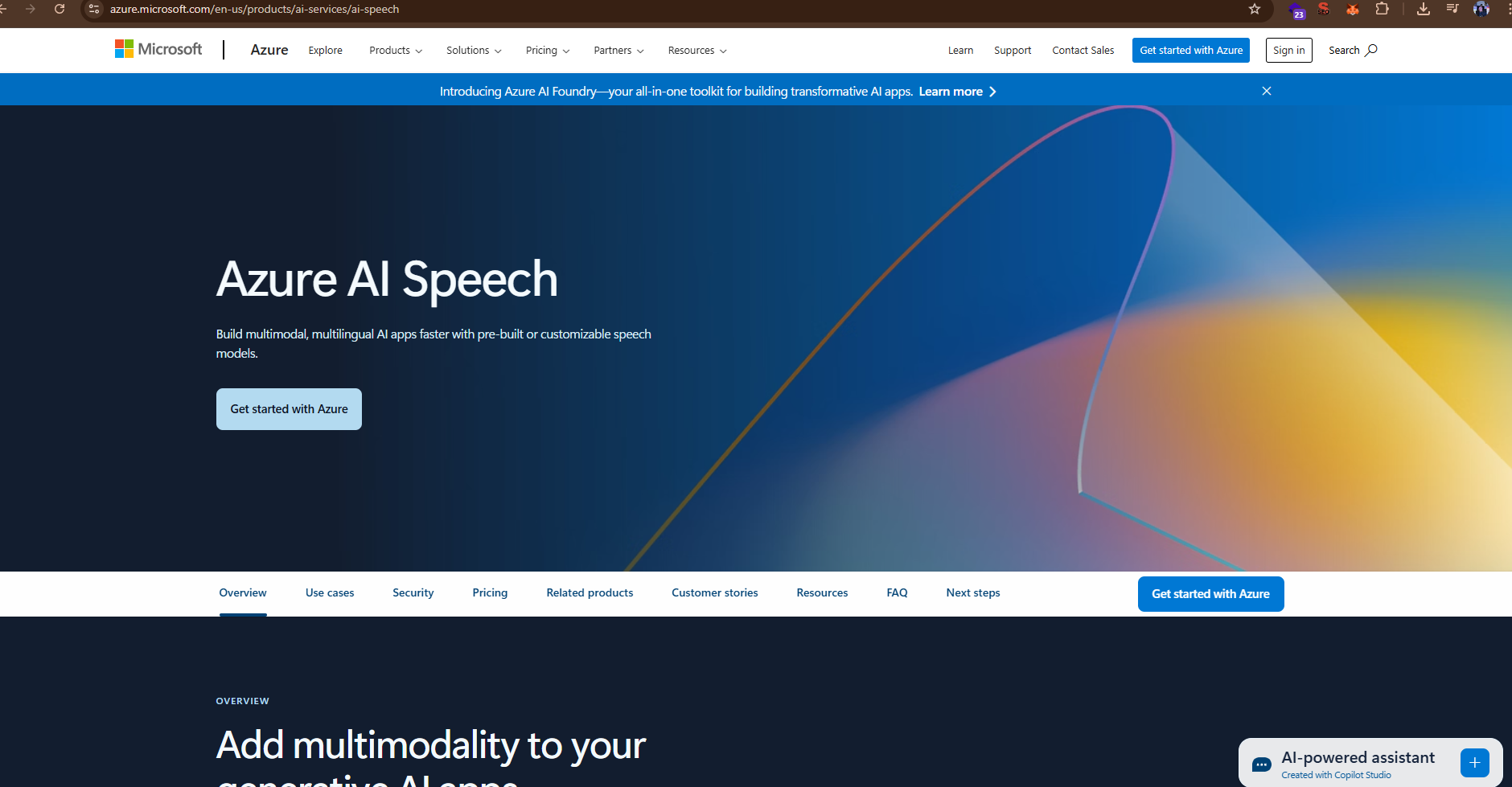
Use Cases: Customer service bots, global apps, and IoT devices. Drawbacks: Complex setup; not ideal for non-technical users.
Which Platform Should You Choose? Narakeet is best for Indian language projects and free testing, Google TTS for scalability, ElevenLabs for emotive audio, Murf AI for ease of use, and Azure TTS for enterprise needs. Try their free tiers to find the right fit.
